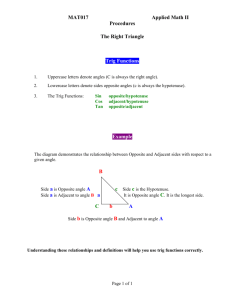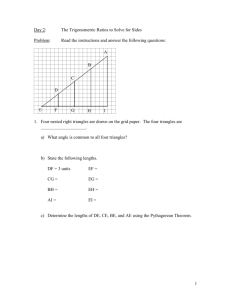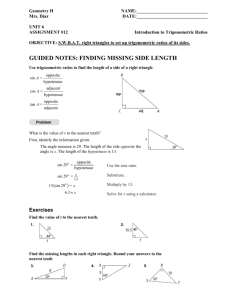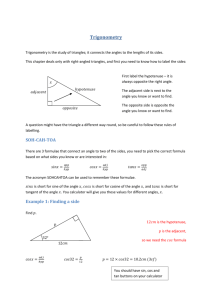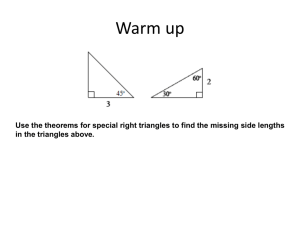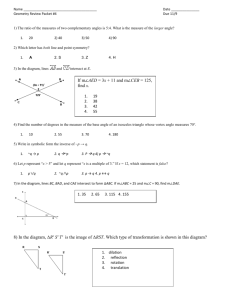06-SOHCAHTOA
advertisement
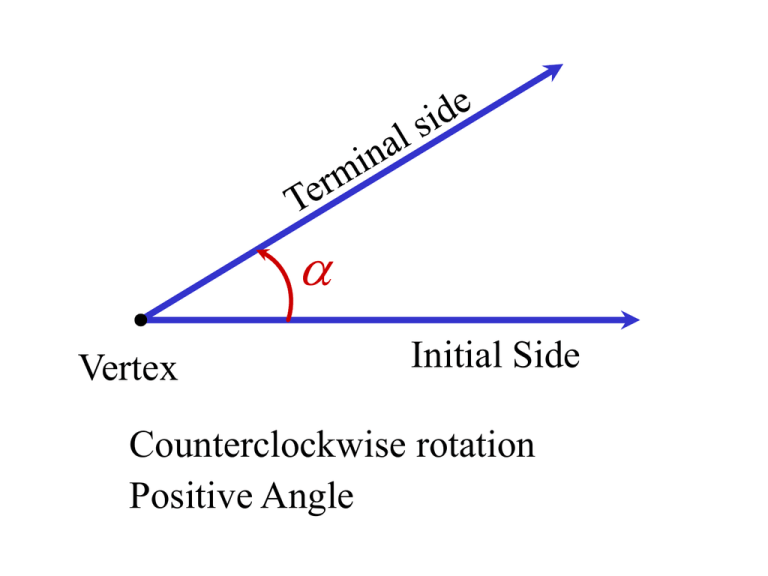
Vertex Initial Side Counterclockwise rotation Positive Angle Vertex Clockwise rotation Negative Angle Initial Side An angle is said to be in standard position if its vertex is at the origin of a rectangular coordinate system and its initial side coincides with with positive x - axis. y Terminal side Vertex Initial side x The angle formed by rotating the initial side exactly once in the counterclockwise direction until it coincides with itself (1 revolution) is said to measure 360 degrees, abbreviated 360 . Terminal side Initial side Vertex Terminal side Vertex Initial side 1 90 angle; revolution 4 Consider a circle of radius r. Construct an angle whose vertex is at the center of this circle, called the central angle, and whose rays subtend an arc on the circle whose length is r. The measure of such an angle is 1 radian. r r 1 radian Theorem Arc Length For a circle of radius r, a central angle of radians subtends an arc whose length s is s r A triangle in which one angle is a right angle is called a right triangle. The side opposite the right angle is called the hypotenuse, and the remaining two sides are called the legs of the triangle. c b 90 a Initial side c a b The six ratios of a right triangle are called trigonometric functions of acute angles and are defined as follows: Function name Abbreviation Value b/c sin sine of a/c cos cosine of b/a tan tangent of c/b cosecant of csc c/a secant of sec a /b cotangent of cot Find the value of each of the six trigonometric functions of the angle . c = Hypotenuse = 13 12 13 b = Opposite = 12 a b c 2 Adjacent 2 a 12 13 2 2 2 2 a 169 144 25 2 a 5 a Adjacent = 5 b Opposite = 12 c Hypotenuse = 13 Opposite 12 csc Hypotenuse 13 sin Opposite 12 Hypotenuse 13 Hypotenuse 13 Adjacent 5 sec cos Adacent 5 Hypotenuse 13 Adjacent 5 Opposite 12 cot tan Opposite 12 Adjacent 5 b a c 2 2 2 2 2 b a c 2 2 2 c c c c b 2 2 2 b a 1 c c 90 a sin cos 1 2 2 Theorem Complementary Angles Theorem Cofunctions of complementary angles are equal.
